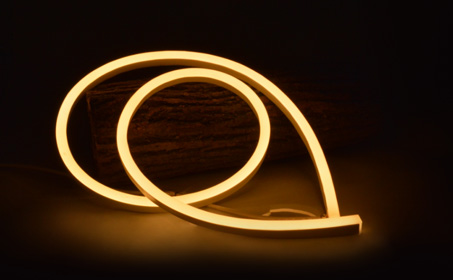How to Choose the Best Waterproof LED Strips?
Waterproof LED strips are a simple and cost-effective way to instantly enhance the look and ambience of any room or outdoor space. Let us show you that today's LED lights are easier, more attractive and more advanced than ever before.
What to look for in a waterproof LED light bar
Feeling inspired? Excited to get your hands on some LED strips and get started on your upcoming project? Let's discuss exactly what you should be looking for before you buy one of these products.
Lumens
Lumens are used to measure the brightness of an LED strip. The manufacturer indicates this by stating the number of lumens per foot or metre of the product. The number of lumens you choose should depend on your project.
For example, if you only need accent lighting, it is best to choose a lower lumen number (100 to 250). However, if you are doing a large campaign such as advertising signs, you should choose a higher lumen count (500 and above).
Strip size
Strip size refers to the length of the LED strip. The length you need will depend on your project, so make a good estimate of what you need before you buy. LED strips are usually sold by the foot or reel, with each reel containing an average of 5 metres (approximately 16.5 feet) of strip.

LED density
Once you know how many strips you will need, it is important to find a product with the best LED density for your project. LED density is how many LEDs there are per unit of a given length (usually measured in feet per metre or yards). Products with more LEDs per unit length have a higher light output and more uniform illumination than products with fewer LEDs.
Colour temperature
As far as aesthetics are concerned, there are two key factors to bear in mind: colour and temperature.
You can buy a solid colour LED neon strip or choose a version that offers multiple colours. What you end up buying should really depend on your personal preferences. While single-colour lights can provide an elegant, clean look for accent or basic lighting, multi-colour lights can add depth and character to your home or business.
When it comes to lighting, temperature (in Kelvin) refers to how 'cold' or 'warm' the light emits. The higher the Kelvin, the lower the temperature. Cooler temperatures will give more blue light, while warmer temperatures will give more yellow or amber light. There is also a 'neutral' temperature of basic white. The temperature you choose should depend on your personal preferences and your project. For example, cooler light is better for work lighting, while warmer light is better for more laid-back environments, such as bedrooms.
Installation
Installation refers to how the light must be installed. While 'plug and play' devices are now very popular - in fact, they are the most convenient option - there are some devices that require more advanced installation. Some LED strips even have to be programmed before they can be used! Unless you are a professional or have previous experience of installing this LED light, you may wish to choose a device that is easy to install (e.g. tape).


评论
发表评论